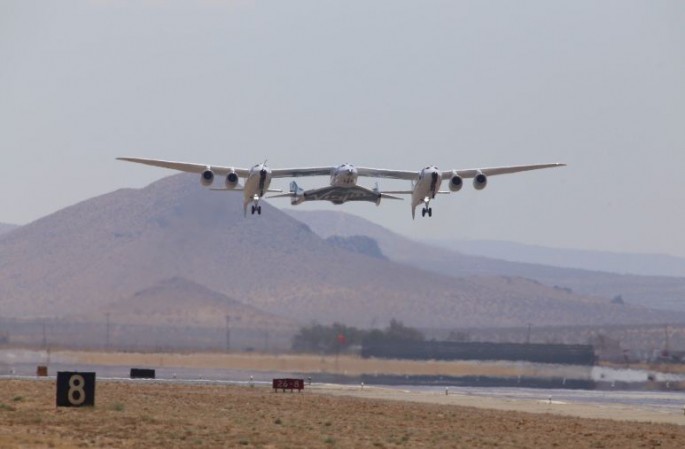Virgin Galactic's "VSS Unity," the second SpaceShipTwo-class suborbital rocket-powered manned spaceplane, successfully completed its first captive-carry flight on Sept. 8.
VSS Unity is the successor to the VSS Enterprise, the first SpaceShipTwo-class spaceplane. VSS Enterprise broke-up in-flight and crashed in the Mojave desert on Oct.31, 2014 during a test flight, killing one of its pilots.
VSS Unity took-off from and landed back at an air and space port in California after a nearly four hour flight over the Mojave. Virgin Galactic said the spaceplane reached a maximum altitude of 15,000 meters.
It said the maiden flight "marks an exciting milestone in our shared quest to open space to change the world for good." It noted the aim of the flight was to capture "high fidelity aerodynamic performance data" while allowing the teams to gain further experience operating a crewed flight.
It has been two years since the original SpaceShipTwo was destroyed in 2014 during a deadly test flight that killed one of its two pilots and seriously injured the other.x "Our first flight test was an emotional and fulfilling moment for our hardworking team," Virgin Galactic said.
More test flights are planned before VSS Unity starts to take passengers to space.
"Yesterday's flight was a culmination of years of hard work by our dedicated team, past and present, to build a company and build a beautiful spaceship," said Sir Richard Branson, Virgin Galactic's billionaire founder.
"Our tireless and dedicated team makes me so proud: Their commitment to the program, to safety, to our founding astronauts, and to our vision to open access to space led us to this first flight test."
VSS Unity is a six-passenger, winged spaceplane has been designed to take passengers on five minute suborbital space flight.
The Scaled Composites Model 339 SpaceShipTwo (SS2) is an air-launched suborbital spaceplane designed for space tourism. It is manufactured by The Spaceship Company, a California-based company owned by Virgin Galactic.
SpaceShipTwo is carried to its launch altitude by a mothership before being released to fly on into the upper atmosphere powered by its rocket engine. It then glides back to Earth and performs a conventional runway landing.



























